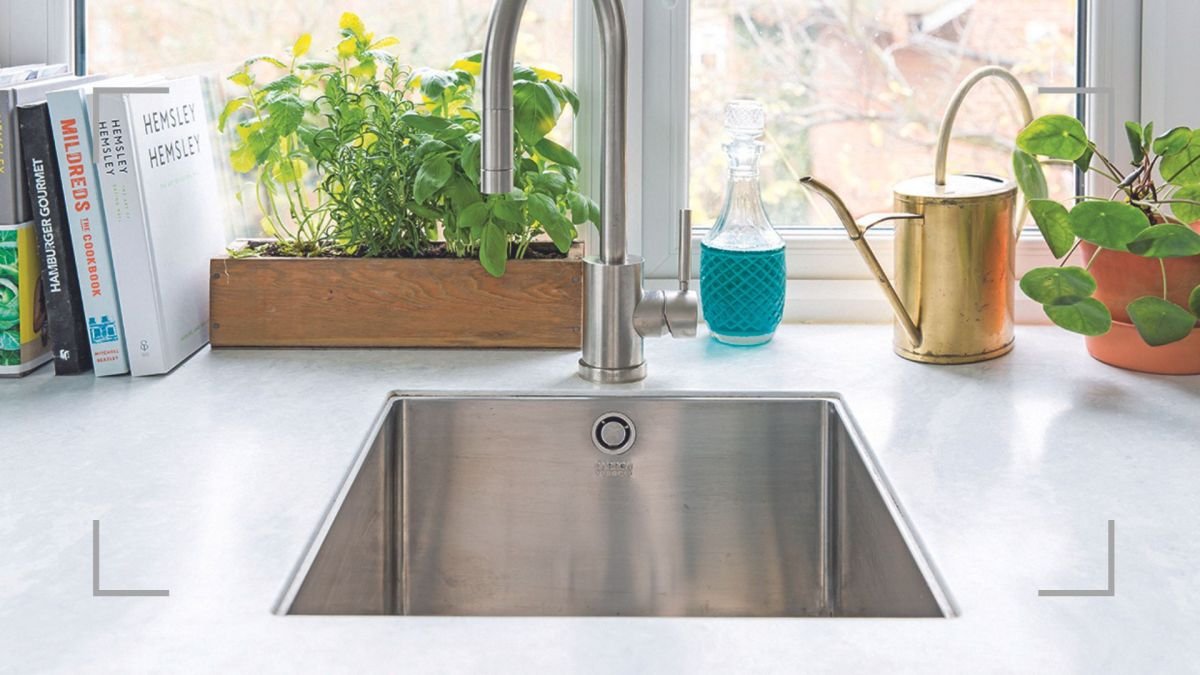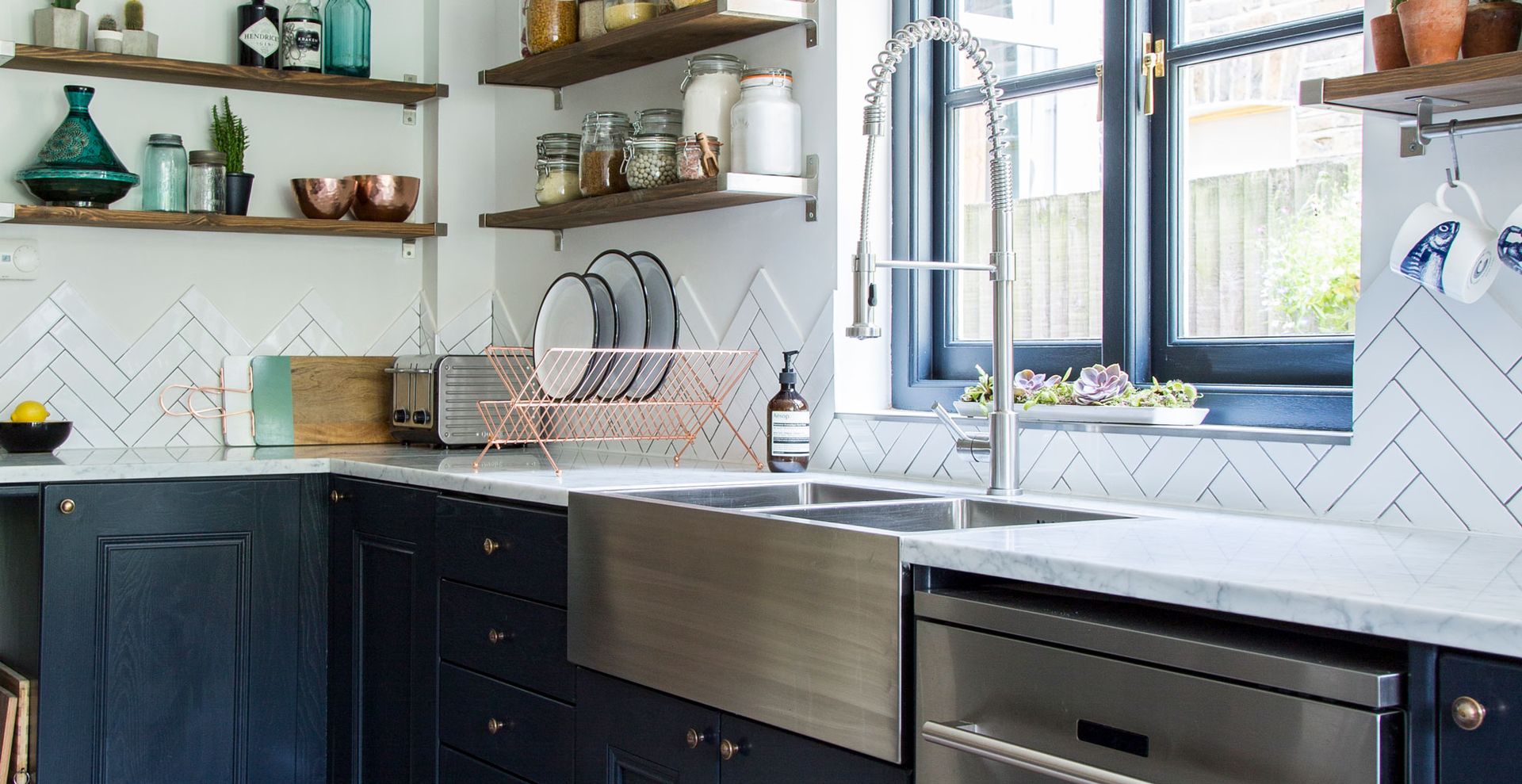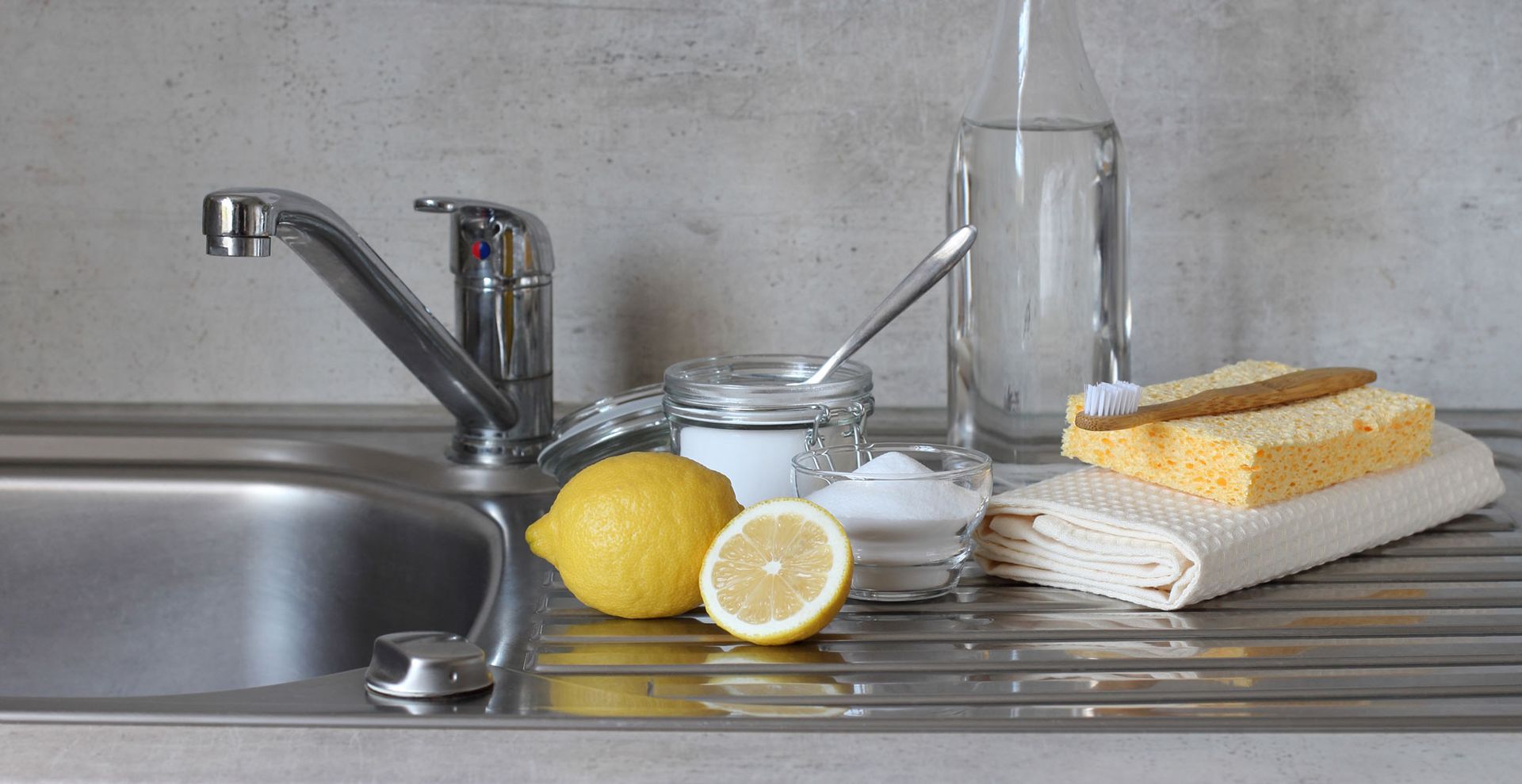
[ad_1]
Knowing how to clean a stainless steel sink is important for maintaining cleanliness in your kitchen, but knowing how to do so properly without damaging the grain is imperative.
Stainless steel sinks are a popular choice when it comes to decking out our kitchens, as seen in many emerging kitchen trends in 2023. Generally, you can find one for every budget, they’re incredibly durable and long-lasting and are normally very easy and low-maintenance to take care of – unlike ceramic sinks, for example, which are much more high-maintenance for care.
However, if you don’t clean a stainless steel sink correctly you run the risk of scratching it and causing costly damage. Cleaning it properly also guarantees it comes up sparkling and shining every time, as is the aim when cleaning any stainless steel surface. Failing to clean it properly, will likely result in your sink looking a little dull, lacking that gleaming look everyone wants from their stainless steel.
When it comes to cleaning a kitchen, there are best practices for all chores from descaling a kettle and cleaning a dishwasher, to cleaning a washing machine. Following the best way to clean a stainless steel sink is key because there’s a proper way to ensure your sink stays gleaming and sparkling without any scratches.
How to clean a stainless steel sink properly
Knowing how to clean a stainless steel sink the right way just means knowing what tools and cleaning products to use – and which ones not to use. To find out, w&h has spoken to cleaning experts to get their take on the right way to clean yours – and luckily, it’ll take you no more than 10 minutes!
1. Make sure to get rid of all food and rinse

(Image credit: Future)
We’ve all had those moments at the end of a day of cooking – your sink is full of little leftover bits of food from breakfast, lunch, and dinner. While it’s tempting to leave these and sort them out the next day, it’s important to get rid of any leftover food, as these crumbs can easily cause bacteria to multiply and can attract nasty things like fruit flies.
So the first step to take when cleaning your stainless steel sink is to take all of your kitchen essentials out of the sink and get rid of the excess food. Use a kitchen towel to scrape any bits out of the plughole, and wipe around the sink to get off any excess scraps.
Chris Wootton, MD at Poppies (opens in new tab), a UK-wide domestic cleaning company, explains why this step is so important to avoid damaging your sink. “Always rinse grit and dirt away before cleaning – you can inadvertently leave deep scratches in your stainless by rubbing/cleaning with debris on your cloth,” Chris explains.
Once you’re done with that, splash the sink with water quickly to dislodge any smaller bits of debris that might be left behind.
2. Use a specialist scouring pad to clean the surface
That’s right, we said a scouring pad but the key is in the ‘specialist’ part of the description. Victoria Gregory, who runs Pocket Rockets Housekeeping Rescue Services (opens in new tab), explained to w&h, “My favorite trick for cleaning a stainless steel sink is to give a good scrub with an anti-scratch scouring pad. If you use, say, a wire wool or hard scouring pad, they can scratch the steel.”
For this reason, avoid wire scouring pads, and search for one that specifies that it is for use on delicate surfaces for a gentle clean.
Put some good anti-grease cleaner, washing up liquid, or multipurpose kitchen cleaner on top of it, and simply scrub away, Victoria suggests, working gently but firmly, and getting in all the nooks and crannies of your sink – including taps and plug holes. Then, she says, “Simply rinse away with water.”
Chris also advises leaving the product on there for some time to work its magic before you get (gently) scrubbing if you have time to do so. Saying, “Spray your kitchen cleaner and then wait – the professional secret is dwell time – you must allow the product time to work.”
3. Buff your sink with glass cleaner
To finish Victoria suggests using a “strong kitchen towel and glass cleaner to buff up.” We all want that sparkling, shining sink and this step is vital for achieving that.
“Spray the sink, taps, and draining board, and using the kitchen towel clean it the same way you’d clean your windows,” Victoria explains. “The reason I use the glass cleaner and kitchen roll is to get a really nice shine. The shine will be fantastic.”
“If you wanted to make your own natural glass cleaner, then good old-fashioned white vinegar and lemon juice work great, but any shop-bought glass cleaner will do. “
And there you have it – a shining, sparkling sink that takes less than 10 minutes to achieve.
Tips for keeping your stainless steel sink in tip-top condition
While this bigger sink cleaning task might be something you do weekly, depending on how often you clean your house, there are ways you can maintain the shine and cleanliness of your sink throughout the week. And luckily, they’re all simple and easy to do. Chris shares some professional top tips for keeping your sink hygienic in between deeper cleans.

(Image credit: Future)
- Quickly rinse the sink around every time you use it
- Spritz with a gentle kitchen cleaner and wipe daily
- In a hard water area, give it particular attention every few days for removing any limescale build-up.
- Never use bleach, particularly on stainless steel – the chlorine and stainless steel can react, leaving staining.
How to remove stains from a stainless steel sink
You can remove any lingering stains on your sink by using a combination of washing-up liquid and baking soda. Simply mix these two together to form a paste and rub it gently into the stain with a cloth before rinsing. Baking soda is a great ingredient for natural cleaning, it can even help you to clean an oven or clean the fridge for example.
Chris also advised on the best way to tackle any limescale in your sink, which may be particularly prevalent in hard-water areas. He said, “Dripping taps or puddles in your drainer can create a build-up of limescale.”
“Keep on top of this using a natural and mild acid such as vinegar or lemon juice. Do this as soon as you notice the build-up. A thicker build-up of limescale needs a stronger chemical to remove, and that’s when you risk having problems.” But take care when cleaning with vinegar so that you don’t expose the stainless steel for too long because the acidic nature of vinegar can cause a reaction and potential damage if left on for too long.

(Image credit: Getty Images | Aygul Bulte)
How to clean a stainless steel sink with baking soda
“When cleaning metal in the home you don’t need to spend on fancy cleaning products,” explains Paul McFadyen, managing director at metals4U (opens in new tab). “From your stainless steel sinks to your aluminium splashbacks, it can easily be done on a budget.”
“Baking soda is a great ingredient which can be used for cleaning stainless steel around the home. I would advise using baking soda mixed with water to form a paste to remove any dirt or grime, as it is non-toxic.”
“Always rub in the direction of the grain of the stainless steel for optimum shine and to prevent streaks. It’s important not to use anything abrasive, such as a scrubber, on the metal as it can easily scratch. Even tap water in some areas can damage stainless steel so be careful to remove watermarks afterwards.”
“I recommend using a microfiber cloth with the baking soda to clean the metal surface and afterwards, a small amount of baby oil, as it’s gentle and helps to remove fingerprints and watermarks, plus it leaves a great shine.”
[ad_2]
Source link






